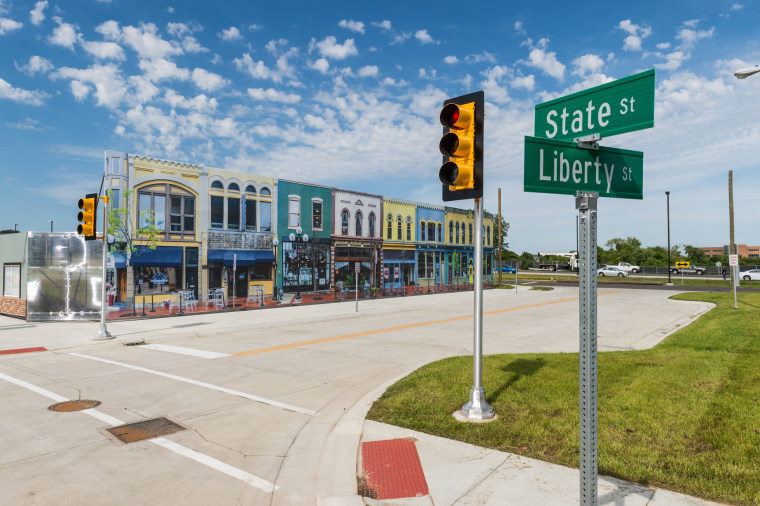ANN ARBOR, MICH. — A self-driving car is driving past Liberty Street’s charming storefronts when a truck runs a red light. The car screeches to a halt, avoiding a collision by inches.
Except that the truck isn’t real. And Liberty Street’s shops and restaurants are just a painted façade. Almost nothing here in Mcity is real, and that’s just the way Carrie Morton likes it.
“0.1 percent of extreme car testing should be done using real vehicles,” says Morton, deputy director of the University of Michigan’s Mcity facility. “The rest should be some sort of simulation. Anything else is too dangerous.”
DIGITAL GHOST TOWN
Mcity is a sort of digital ghost town that replicates almost any environment that today’s motorists — and tomorrow’s autonomous vehicles — might experience. Its 32 acres contain highways, ramps, tunnels, and roads made of concrete, asphalt, brick, and dirt. There are crosswalks, bike lanes, curbs, and fire hydrants, all surrounded by fake buildings and populated by eerily lifelike crash test dummy pedestrians.
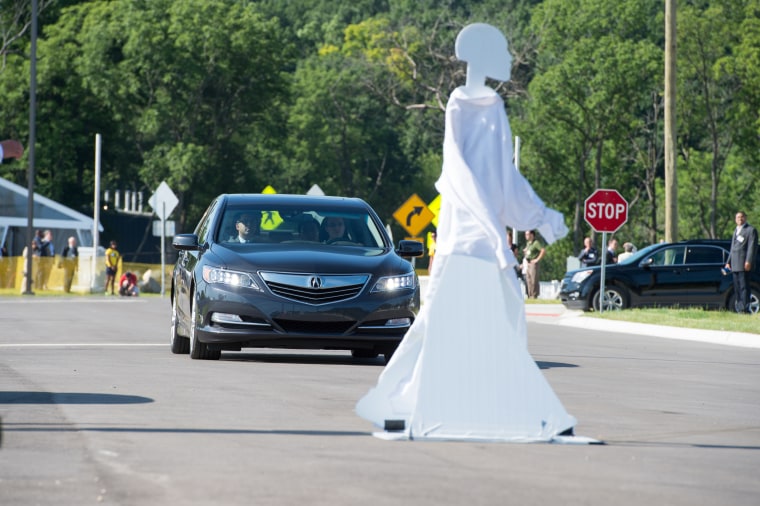
But the most important part of Mcity is invisible. Though its streets look to be empty of all but Mcity’s test vehicles, they teem with virtual cars, trucks, cyclists, and pedestrians. These can be seen on a computer screen in Mcity’s experimental car: a Lincoln MKZ updated with sensors, transceivers, and computers that make it both autonomous and connected.
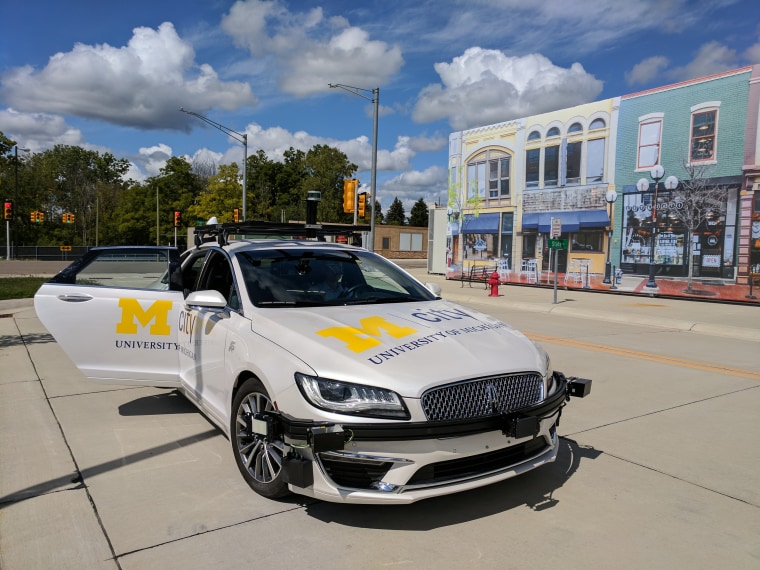
“We can create dozens or even hundreds of background vehicles,” says Morton. “Think of it as augmented reality that saves time and money, and reduces risk.”
PLANNING FOR A NEW WORLD
Carmakers are racing to develop autonomous vehicles to reduce the more than 37,000 road deaths in the U.S. each year — and give motorists the freedom to work, communicate, and even sleep on the move.
But testing those vehicles isn’t easy. Loosed on real-world streets, they might not encounter a hazardous situation for months or years. And manufacturers and regulators are wary of testing new technologies using the public as guinea pigs.
“From a safety perspective, I feel much more comfortable having had a vehicle tested at Mcity,” says Kirk Steudle, director of Michigan’s Department of Transportation. “Toyota engineers say that this is a place where they can almost crash and feel safe about it.”
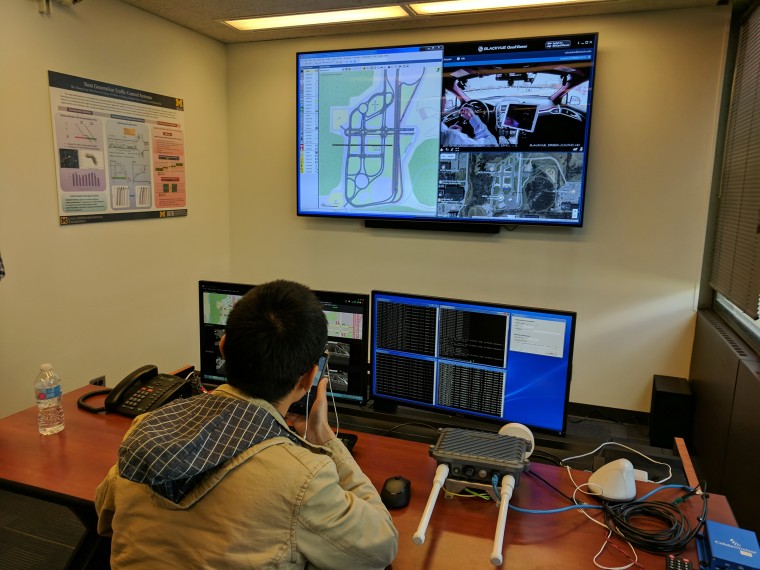
Mcity uses DSRC (Dedicated Short Range Communications), a system that lets cars communicate with each other and with traffic lights, parking spaces, and other infrastructure elements. DSRC-equipped cars continuously broadcast their location, speed, and direction, using wireless radio signals a bit like beefed-up wi-fi.
The cars also listen for signals from other vehicles within a range of about 1,000 feet. So cars with DSRC can “hear” around corners for approaching vehicles or get an early warning if a car ahead stops short.
“We believe [DSRC] connected vehicles are cheaper and safer than autonomous vehicles alone,” says Huei Peng, Mcity’s director. “Imagine fire trucks or ambulances with DSRC that tell traffic lights for cross traffic to stay red, allowing them to zoom right through.”
Mcity has developed just such stoplights, which can even tell human (or robot) drivers when they’ll change. A computer-controlled car might turn off its engine during a long red, for example, or avoid a sudden stop if a green light turns yellow.
PUSHING A NEW STANDARD
At the moment, only one U.S. production vehicle — the 2017 Cadillac CTS — comes with DSRC. Mercedes-Benz and BMW have similar systems that use cellular signals, but there seems to be little enthusiasm among carmakers to move to a single standard.
By demonstrating systems like the smart traffic lights that benefit cities and drivers alike, Mcity hopes to encourage the deployment of DSRC and make it a must-have feature for future vehicles. In the meantime, the system will allow Mcity to put cars in dangerous situations with virtual trucks, trains and pedestrians, without the risk of real accidents.
“They are developing the cars of the future in a safe space,” says Kirk Steudle, “so that instead of just having them popping out on the road, we can all be prepared ahead of time.”
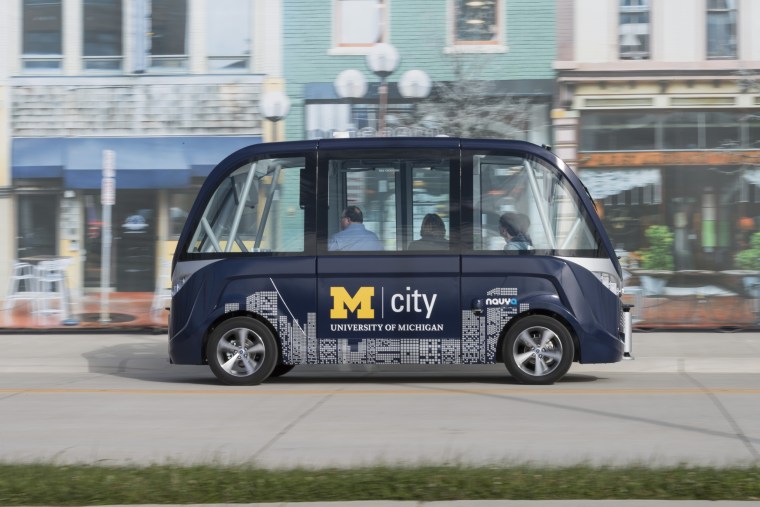
In fact, Mcity has been so successful since it opened in 2016 that the Michigan Department of Transportation is working on a larger autonomous vehicle-testing site. When the 335-acre Willow Run project is completed, it will have a 2.5-mile highway loop for testing vehicles at high speed, urban and off-roads areas, a cyber-security facility — and probably a fleet of virtual runaway trucks.
